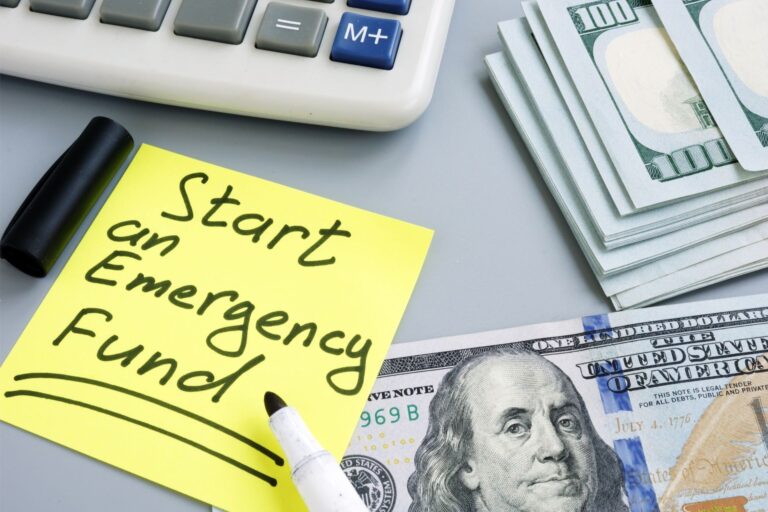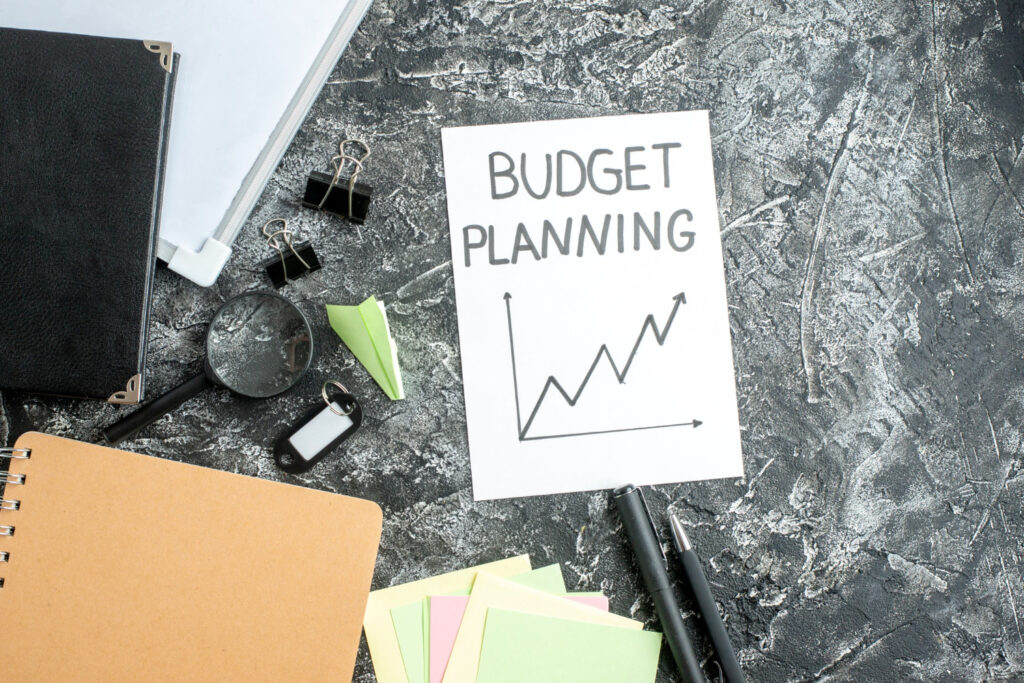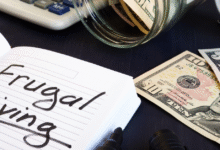How To Live On One Income: 7 Strategies That Helped Me

Let me be real with you for a second. When my family first started living on one income, I thought we were doomed. I mean, how do you go from two paychecks to one without feeling like you’re constantly drowning?
Spoiler alert: it’s totally possible, and you don’t have to live off ramen noodles to make it happen.
Look, I get it. The idea of surviving on a single paycheck sounds scary. But here’s the thing: thousands of families are doing it right now, and they’re not just surviving. They’re actually thriving.
The secret? Having a solid game plan and sticking to it like your financial life depends on it (because, well, it kinda does).
In this guide, I’m going to walk you through everything I learned about making one income work. No fluff, no BS, just real strategies that helped me and countless others manage money like pros.
What Is Single Income?
Before we get into the nitty-gritty, let’s clear up what we’re actually talking about here. A single income simply means your household runs on one paycheck instead of two.
Maybe one partner stays home with the kids, or perhaps someone lost their job and you’re figuring things out. Whatever the reason, you’re working with one source of regular income.
Here’s what it doesn’t mean: it doesn’t mean you’re broke, and it definitely doesn’t mean you can’t build wealth. It just means you need to be smarter about how you handle your money. Think of it as playing financial chess instead of checkers.
Most people assume single income families are automatically struggling, but that’s not always the case. Some families choose this lifestyle intentionally because the benefits outweigh having two incomes. Others find themselves in this situation unexpectedly and have to adapt quickly.
Is It Possible To Live Off One Income?
Short answer? Absolutely yes. Long answer? It depends on your willingness to make some changes and stick to them.
Living on one income isn’t some impossible feat reserved for financial wizards. Regular people do it every single day. The difference between those who succeed and those who struggle comes down to planning, discipline, and knowing which strategies actually work.
I won’t sugarcoat it though. If you’re used to a two-income lifestyle, the adjustment period can feel rough. You might have to make sacrifices you’re not thrilled about. But here’s what I discovered: once you get the hang of it, living on one income can actually be less stressful than juggling two careers and all the expenses that come with them.
The key is understanding that it’s not about how much you make. It’s about how well you manage what you have. I’ve seen families earning $50,000 a year living more comfortably than families pulling in $100,000 because they mastered the art of smart money management.
Benefits Of Living On One Income
Okay, so why would anyone willingly choose to live on one income? Let me break down some surprising benefits that most people don’t talk about.
You Become A Money Management Expert
When you only have one paycheck coming in, you can’t afford to be careless with money. You’ll develop skills that people with multiple incomes never bother learning. Budgeting becomes second nature, and you’ll know exactly where every dollar goes.
This might sound boring, but trust me, there’s something incredibly empowering about having complete control over your finances. No more wondering where all your money went at the end of the month.
You Avoid The Debt Trap
Here’s something interesting I noticed: when you live on one income intentionally, you’re way less likely to rack up stupid debt. Why? Because you simply can’t afford to put things on credit cards and hope for the best.
You learn to distinguish between actual needs and things you just want. That impulse buy at Target? Not happening when you’re carefully managing a single paycheck. Your future self will thank you for this, FYI.
Someone Can Focus On Home And Family
If you have kids, having one parent at home can be a game-changer. No more juggling daycare schedules, paying astronomical childcare costs, or feeling guilty about missing school events. One parent gets to be fully present, which is priceless.
Even without kids, having one person manage the household means things run smoother. Meal planning, home maintenance, and all those little tasks that eat up time get handled without both partners feeling exhausted.
You Build Financial Resilience
Learning to live on less actually makes you more financially secure, not less. Sounds backward, right? But think about it: if you can comfortably live on one income, you can save the entirety of a second income if circumstances change. You’ve built in a massive safety net.
Plus, you develop problem-solving skills that come in handy during financial emergencies. You’re not panicking when unexpected expenses pop up because you’ve already learned how to stretch a dollar.
7 Strategies That Can Help You Live On One Income
Alright, let’s get to the good stuff. These are the strategies that actually moved the needle for me. I’m not going to waste your time with generic advice like “spend less.” We’re going deeper than that.
1. Build An Emergency Fund

I cannot stress this enough: an emergency fund is not optional when you’re living on one income. It’s absolutely essential. This is your financial safety net, and without it, one unexpected car repair or medical bill can derail everything.
Here’s how to think about it: your emergency fund is like insurance against life’s curveballs. When you only have one income stream, you can’t afford to be caught off guard. I learned this the hard way when our water heater died at the worst possible time.
How Much Should You Save?
Financial experts typically recommend 3-6 months of expenses, but when you’re on one income, I’d push for 6-9 months if possible. I know that sounds like a lot, but you’ll sleep better at night knowing you have that cushion.
Start small if you need to. Even $500 in an emergency fund is better than nothing. Set up automatic transfers of $50 or $100 each month into a separate savings account you don’t touch. The key is consistency, not the amount.
Where To Keep Your Emergency Fund
Keep this money somewhere accessible but not too accessible. A high-yield savings account is perfect because you’ll earn some interest while keeping the funds liquid. Don’t invest this money in stocks or anything risky. This isn’t your wealth-building money; it’s your peace-of-mind money.
I use Ally Bank for my emergency fund because their interest rates are competitive and there are no monthly fees. But shop around and find what works for you.
The important thing is that it’s separate from your regular checking account so you’re not tempted to dip into it for non-emergencies.
2. Set A New Budget

If you’re transitioning from two incomes to one, your old budget is officially useless. Sorry, but it’s true. You need to create a completely new budget that reflects your current reality, not your past circumstances.
This was probably the hardest pill for me to swallow. I had to accept that our lifestyle needed to change, and that meant getting brutally honest about our finances. But once I did it, everything else fell into place.
Zero-Based Budgeting Is Your Friend
I’m a huge fan of zero-based budgeting, where every single dollar has a job before the month even starts. You’re essentially giving your money marching orders: $X goes to rent, $X goes to groceries, $X goes to savings, and so on until you hit zero.
This method forces you to be intentional with every penny. There’s no room for “I don’t know where that $200 went.” You know exactly where it went because you told it where to go.
Track Everything For One Month First
Before you create your new budget, track every expense for one full month. And I mean everything. That $3 coffee, the $1.99 app purchase, the random Amazon order you forgot about. Write it all down.
This exercise is eye-opening. You’ll discover spending patterns you didn’t even know you had. Maybe you’re dropping $200 a month on takeout without realizing it. Once you see the numbers in black and white, it’s easier to make informed decisions about where to cut.
Budget Tools That Actually Help
Don’t try to do this all in your head or on random scraps of paper. Use a proper budgeting tool. I personally love YNAB (You Need A Budget) because it follows the zero-based budgeting method and has a great mobile app. Mint is another solid option if you want something free.
Some people prefer good old-fashioned spreadsheets, and that’s fine too. The best budgeting method is the one you’ll actually stick with. Find your tool and commit to updating it regularly.
3. Start Cutting Costs Early

Here’s where things get real. You need to look at your expenses with fresh eyes and be willing to make cuts that might hurt a little. I’m not talking about eliminating all joy from your life, but you do need to prioritize ruthlessly.
When I first did this exercise, I was shocked at how much money we were wasting on things that added zero value to our lives. Subscriptions we forgot about, memberships we never used, and services we could easily live without.
The Low-Hanging Fruit
Start with the easy wins. Cancel subscriptions you’re not using. Do you really need Netflix, Hulu, Disney+, AND HBO Max? Pick one or two and rotate if you get bored. That gym membership you haven’t used in six months? Gone.
Call your service providers and negotiate better rates. Insurance companies, internet providers, and phone companies often have promotions they don’t advertise. A 20-minute phone call could save you $50-100 a month. I’ve done this multiple times and it works.
The Bigger Cuts
Now for the tougher decisions. Your housing cost is probably your biggest expense. If you’re spending more than 30% of your single income on housing, you might need to consider downsizing or relocating to a cheaper area.
I know, I know. Moving sucks and nobody wants to downsize. But here’s the truth: being house poor is miserable. I’d rather live in a smaller, more affordable place and have breathing room in my budget than stress about making rent every month.
Transportation is another big one. If you’re making car payments on two vehicles, consider selling one and becoming a one-car family. Or trade in that fancy car with the hefty payment for something reliable but cheaper. Your car doesn’t define you, but your financial stress definitely affects you.
Food Spending Needs Attention
Most families overspend on food, especially dining out. I get it, cooking every night is exhausting. But eating out regularly on one income is a budget killer.
Start meal planning and cooking at home more often. Batch cooking on weekends can save you time and money during the week. Use grocery store apps to find deals and buy generic brands for items where quality doesn’t matter much. Your taste buds won’t know the difference between name-brand and store-brand pasta, I promise.
4. Pay Down Debt

Debt is the silent killer of single-income budgets. Those minimum payments might not seem like much individually, but add them all up and they’re probably eating a huge chunk of your paycheck.
I used to think debt was just a normal part of life. Everyone has credit card debt, right? Wrong. Debt is an emergency, especially when you’re living on one income. It needs to be attacked aggressively.
List All Your Debts
Get everything out in the open. Write down every debt you have: credit cards, car loans, student loans, personal loans, everything. Include the balance, interest rate, and minimum payment for each one.
Seeing it all laid out can be depressing, but it’s also motivating. You can’t fight an enemy you can’t see. Once you know exactly what you’re dealing with, you can make a plan to eliminate it.
Choose Your Debt Payoff Method
There are two popular methods: the debt snowball and the debt avalanche. The snowball method has you pay off the smallest debt first for quick wins and motivation. The avalanche method tackles the highest interest rate debt first to save money on interest.
Mathematically, the avalanche method saves you more money. But personally? I’m team snowball all the way. The psychological boost of eliminating a debt completely kept me motivated during the tough months. Pick whichever method you’ll actually stick with.
Find Extra Money To Throw At Debt
Every dollar you can scrape together beyond minimum payments accelerates your debt freedom. That tax refund? Straight to debt. Birthday money from grandma? Debt. Found $20 in an old coat pocket? You guessed it.
Consider picking up a side hustle temporarily to speed things up. Drive for Uber on weekends, sell stuff you don’t need on Facebook Marketplace, or freelance in your spare time. The extra income won’t last forever, but it can help you knock out debt faster.
5. Consider Tax Withholding
This is a strategy most people overlook, but it can put more money in your pocket each month. If you’re getting a big tax refund every year, you’re essentially giving the government an interest-free loan. That money could be helping you right now instead.
Adjusting your tax withholding means you’ll have more take-home pay each month. That extra cash can go toward bills, savings, or debt payoff. Just make sure you’re still withholding enough to avoid owing a ton at tax time.
How To Adjust Your Withholding
Talk to your HR department about updating your W-4 form. You can increase your allowances to reduce the amount withheld from each paycheck. The IRS has a Tax Withholding Estimator on their website that helps you figure out the right number.
I’m not a tax professional, so if you’re unsure about this, chat with an accountant or tax advisor. They can help you find the sweet spot where you’re maximizing your monthly income without setting yourself up for a surprise tax bill.
Adjust Your Budget Accordingly
If you do adjust your withholding and your paychecks increase, update your budget immediately. Decide in advance where that extra money will go. Don’t just let it disappear into your checking account with no plan.
This is found money that can accelerate your financial goals. Put it toward your emergency fund, debt payoff, or savings. Just don’t treat it like bonus money to blow on stuff you don’t need.
6. Spend Time, Not Money

One of the best things about living on one income is it forces you to get creative with entertainment and leisure. You can’t just throw money at boredom anymore, and honestly? That’s not a bad thing.
I’ve discovered that some of my favorite memories cost little to nothing. Game nights at home, hiking local trails, picnics in the park, or movie marathons with homemade popcorn. These activities are often more meaningful than expensive outings anyway.
Free And Cheap Entertainment Ideas
Your local library is a goldmine of free entertainment. Books, movies, audiobooks, and even museum passes are often available for free with a library card. Many libraries also host free events and classes.
Check out free community events in your area. Festivals, concerts in the park, farmers markets, and outdoor movie screenings happen all the time. You just have to look for them. Follow your city’s social media accounts to stay in the loop.
Nature is free, people. Go for walks, have a picnic, visit a beach or park. If you have kids, they’ll remember the fun day at the park way more than they’ll remember that expensive theme park trip.
Rethink Date Night
Date nights don’t have to cost $100+ to be special. Cook a nice dinner together at home, have a picnic under the stars, or do a puzzle together while catching up. The point is connecting with your partner, not spending money.
My spouse and I started doing monthly “at-home date nights” where we pick a theme (Italian night, game night, movie marathon, etc.) and go all in. It’s become something we actually look forward to more than expensive restaurant dates.
7. Devise Methods To Manage Your Finance

This final strategy is about creating systems that make managing money easier and more automatic. When you’re living on one income, you can’t afford to be disorganized or forgetful about your finances.
The goal is to set things up so that good financial habits happen automatically, without requiring constant willpower or attention. Because let’s be honest, life gets busy and we all forget things sometimes.
Automate Everything Possible
Set up automatic transfers to your savings account on payday. Automate bill payments so you never miss a due date and rack up late fees. Schedule automatic contributions to your retirement accounts if you have them.
Automation removes the decision-making process. The money moves before you have a chance to spend it on something else. Out of sight, out of mind, and into your savings where it belongs.
Use The Right Banking Setup
I’m a big fan of having multiple bank accounts for different purposes. One checking account for bills, one for everyday spending, and separate savings accounts for different goals (emergency fund, vacation fund, etc.).
This might sound complicated, but it actually makes things clearer. When you look at your “spending” account and see $300, you know that’s what you have for groceries and gas. You’re not accidentally spending money earmarked for rent.
Do Monthly Money Check-Ins
Set aside time once a month to review your finances. Look at what you spent, compare it to your budget, and adjust for the upcoming month. This doesn’t have to take long, maybe 30 minutes to an hour.
These check-ins help you catch problems early before they become disasters. Maybe you’re overspending in one category consistently. Or maybe you found extra money to put toward savings. Either way, you’re staying on top of things instead of being surprised.
Consider Working With A Financial Planner
If you’re really struggling or want to level up your financial game, talking to a financial planner can be worth it. Look for a fee-only planner who doesn’t earn commissions on products they sell you. They’ll give you unbiased advice tailored to your situation.
Many planners offer one-time consultation sessions if you can’t afford ongoing services. Even a single session can provide valuable insights and strategies you hadn’t considered. Think of it as an investment in your financial education.
Pros And Cons Of Living On One Income
Let’s be balanced here. Living on one income isn’t all sunshine and rainbows, but it’s not a nightmare either. Understanding both sides helps you make informed decisions and set realistic expectations.
Pros
Opportunity To Look After Children
If you have kids, having a parent at home full-time is amazing. You’re not missing milestones, you’re available for school pickups and sick days, and you’re not hemorrhaging money on childcare.
Quality childcare is expensive, often costing as much as a second income anyway. When you factor in the costs of working (commute, work clothes, eating out more), staying home sometimes makes more financial sense than people realize.
Resourcefulness Becomes Second Nature
Living on one income turns you into a resourceful problem-solver. You learn to make things work with what you have. Need new clothes? You hit up thrift stores or clothing swaps. Want to redecorate? You DIY it or repurpose what you already own.
These skills stick with you even if your financial situation improves later. You’ll always be someone who thinks creatively about money and doesn’t waste resources unnecessarily.
Clear Distinction Between Needs And Wants
When money is tight, you get really good at identifying what’s actually necessary versus what’s just nice to have. This clarity is valuable and prevents a lot of wasteful spending.
You stop buying things impulsively and start asking yourself: “Do I really need this, or do I just want it?” More often than not, the answer is want, and you walk away. Your wallet thanks you.
Budgeting Becomes Non-Negotiable
You simply cannot survive on one income without a budget. It’s not optional. This forces you to develop a crucial life skill that many people never learn.
Once budgeting becomes a habit, it’s actually kind of empowering. You’re in control of your money instead of wondering where it all went. That feeling of control is worth more than you might think.
Cons
Losing A Potential Income
The most obvious downside is you’re giving up a second paycheck. If that income was significant, the adjustment can be tough. You’re potentially sacrificing career advancement, retirement contributions, and overall earning potential.
This is especially hard if the person staying home had a career they loved. There’s often a sense of loss beyond just the financial aspect. It’s worth acknowledging this emotional component.
Financial Stress And Disagreements
Money is already a leading cause of arguments in relationships, and living on one income can amplify that stress. You might disagree about spending priorities, feel resentful about sacrifices, or argue about who’s contributing what.
The partner earning the income might feel pressure as the sole provider. The partner at home might feel guilty about not contributing financially (even though managing a household is absolutely valuable work). These dynamics require honest communication to navigate successfully.
Difficulty Making Ends Meet
Let’s not sugarcoat it: sometimes one income just isn’t enough, especially if you’re in a high cost-of-living area or dealing with significant debt. You might struggle to cover basic necessities, let alone save for the future.
If you’re in this situation, you might need to get creative with increasing income through side hustles, or make bigger changes like relocating to a more affordable area. It’s not easy, but it might be necessary.
Limited Financial Flexibility
When you’re living paycheck to paycheck on one income, there’s not much room for error. An unexpected expense can throw everything off. You can’t just “make up for it” with the next paycheck as easily.
This lack of flexibility can feel restrictive and stressful. It’s why building that emergency fund (strategy #1) is so critical. Without it, you’re constantly one crisis away from financial disaster.
Final Thoughts
Look, I’m not going to lie to you and say living on one income is easy. It’s not. It requires discipline, planning, and sometimes making sacrifices you’d rather not make. But it’s absolutely doable, and for many families, it’s the right choice.
The key is going into it with your eyes open and a solid plan. Don’t just hope things work out. Make them work out by implementing these strategies consistently. Track your progress, celebrate small wins, and adjust your approach when something isn’t working.
The most important thing? Don’t compare your situation to others. Social media makes it look like everyone else has it figured out and is living their best life. They’re not. Everyone has financial challenges; they’re just not posting about them online.
If you’re transitioning to one income, give yourself grace during the adjustment period. It takes time to find your rhythm and figure out what works for your specific situation. Be patient with yourself and your partner. You’re learning a new way of living, and that doesn’t happen overnight.
Now stop reading and go look at your budget. Seriously, go do it. 🙂 Your future financially-stable self will thank you for starting today instead of putting it off until tomorrow.








